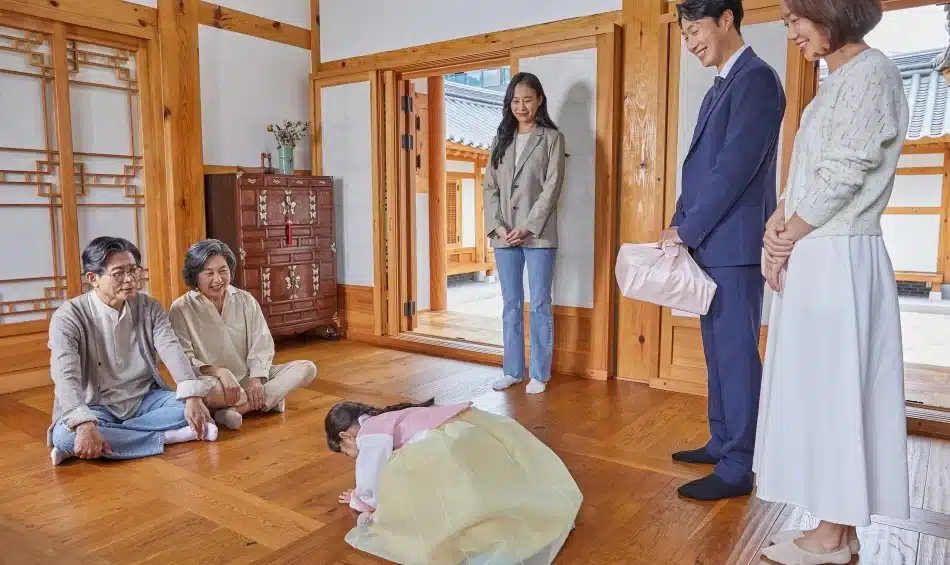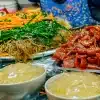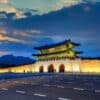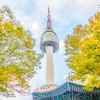Seollal, Lunar New Year’s Day is among Korea’s most important celebrations. According to the lunar calendar, it is celebrated at the beginning of the year. It also serves as an occasion to greet one another with praise for the coming year. The holiday season is when Koreans also attend ceremonies to commemorate their ancestral heritage, bow before their elders and engage in traditional games. Find out more about Seollal rituals and customs!
Korean cooking: tteokguk & jeon
The Seollal’s most memorable experience begins with a delicious Tteokguk (rice cake soup) bowl. Celebrate the New Year in Korean style with Tteokguk, a popular dish made by simmering thin slices of white rice cake in clear soybean soup. To make it an even more filling meal, garnish the bowl with green onion, meat, and eggs and add mandu (dumplings). Enjoy this traditional dish during the New Year celebration in Korea.
Follow this simple trick to make the tteokguk flavor even better when trying it at home! Before you put the rice cakes into the soup to heat, wash them in cold water, and let them soak for around 30 minutes. This makes the rice cakes softer, reduces the boiling time, and gives the soup a distinct flavor. To finish your meal and garnish, you can creatively arrange them to make the dish as attractive as it is delicious.
Another important Seoallal dish is two varieties of jeon (savory pancakes) in addition to the Tteokguk. Coat meat, vegetables, or fish slices with flour and an egg wash before frying in oil to prepare Jeon, a versatile dish that can be enjoyed anytime but is traditionally served during Seollal and Chuseok, the Korean holidays of thanksgiving. The name of each Jeon varies based on the main ingredient, such as batter-fried oysters (Gul Jeon), batter-fried mushrooms (Beoseot Jeon), or batter-fried zucchini (Hobak Jeon). During Seollal, popular Jeons include batter-fried Pollack Fillets (Dongtae Jeon) and batter-fried meatballs (Yugwonjeon)
Wearing Hanbok
Another important aspect of Seollal is the wearing of the Hanbok! Traditional Korean clothing, called des, is worn during ceremonial occasions like weddings and memorial services. Traditional hanboks can be a little difficult to dress since the garments are very bulky.
Hanbok ribbon
The most difficult part of wearing a hanbok is correctly knotting your forum (ribbon). The ribbon helps secure the jacket, which is why it is crucial! Although you can create any kind of ribbon, or even an easy knot, doing it the right way will result in a beautiful image. To create the perfect ribbon:
Cross the right-hand goreum on the left-hand side and then pull it between the two to tie them in.
Put your left hand on top of the tie, wrap the top of the goreum around your palm, then down the back and back up the palm.
New Year’s bow
After putting on hanbok, it is appropriate to present the proper New Year’s Bow. Families gather to celebrate Seollal and everyone will take the New Year’s bow to those in the family’s senior ranks after completing the ancestral memorial ceremony. The bows are different for women and men however both should pay particular consideration to the Gongsu (hand posture).
For males, hands are placed lightly towards the body with the left hand placed over the right. For women, the right hand is placed in front of the left.
To perform the female version of the New Year’s bow, raise your hands held in the gongsu pose to your forehead, tilt your head downwards to look at your feet, and hold the position for the duration of the bow. Then return to a standing position.
The woman slowly lowers her body and kneels. She begins with the left knee and follows it with the right. Then, she sits down completely and bends her back at her waist until it is about 45 degrees for 3 minutes.
Repeat the exercise by sitting straight while kneeling, standing on the right and left foot, and returning hands in the gongsu posture.
For the male variant for the male version of New Bow, hands held in the gongsu posture are raised and lowered in a circle to shoulder height before being lowered on the floor. The men also begin kneeling with their left knee, and then the right one before sitting down. Women only need to bend slightly, males should bend further, and lower their backs to form an even line.
Playing Yunnori
The last thing Seollal has experienced is playing yunnori, one of the traditional games everyone plays! As little as two players play it. With more players, the players are divided between two teams. Each team is provided with four-game markers that they have to move across the board. “The results of the game are determined by the space covered after tossing four sticks, made of chestnut wood, into the air. The flat side and the rounded side with “X” markings distinguish them from each other. The winner is the first team to get the four game pieces all around on the game board!
TIP)
Are you looking to experience some traditional activities? Plan to visit Namsangol Hanok Village, National Folk Museum of Korea, Korean Folk Village, Korea House, HIKR Ground, Insa-dong PR Center, and Unhyeongung Royal Residence! We offer a wide range of traditional cultural experience programs to experience in South Korea!





